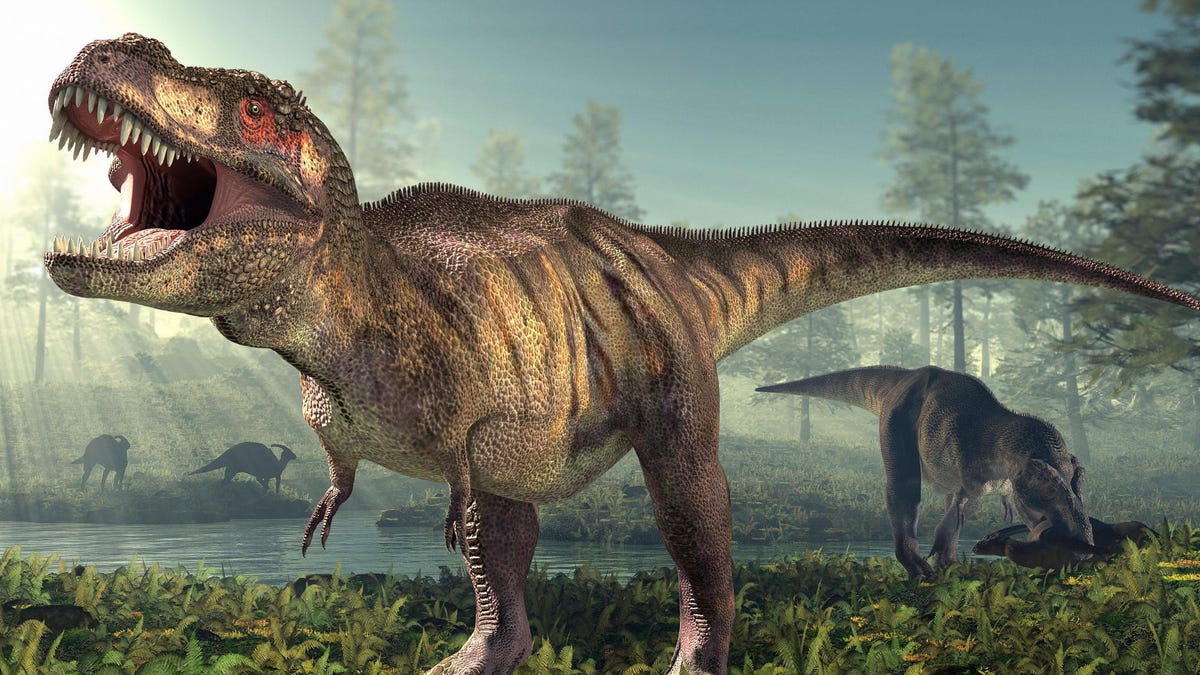T. rex was actually bigger than we thought
Look at this absolute unit.

The new conclusions are based on a 66-million-year-old skeleton found in Canada in the early '90s.
The undisputed king of the dinosaurs, Tyrannosaurus rex, is even bigger than we once believed.
That's according to new research conducted on "Scotty," a 66-million-year-old T. rex skeleton first discovered in Canada in 1991. A team of paleontologists at the University of Alberta measured up the skull, hip and limbs of Scotty and suggested that it had a living weight of almost 20,000 pounds (approx. 8,800 kilograms).
With that kind of weight, the monstrous ancient lizard would be up there with the largest terrestrial animal currently alive, the African bush elephant, which can weigh up to 26,000 pounds.
"This is the rex of rexes," Scott Persons, lead author of the new study, said in a statement.
The skeleton was discovered in the western Canadian province of Saskatchewan, encased in sandstone. It took 10 years of fine excavation work to extricate the fossil and now scientists have finally been able to stitch together a picture of Scotty as he would have been 66 million years ago.
The findings were published in the journal The Anatomical Record on March 21. The research team describes Scotty as "exceptionally large" and "robust", which in reality means he was an absolute unit.
Making Scotty even more unique is the fact that it is the oldest T. rex skeleton discovered and was likely in his early 30s when he died -- which is a pretty good run for the theropods because as far as we currently know, they lived to between 20 and 30 years. By studying one of the major leg bones, the research team could determine that Scotty was a mature T. rex.
And in his time, he'd seen things -- he bore the marks of a fair few scuffles.
"Riddled across the skeleton are pathologies -- spots where scarred bone records large injuries," said Persons.
Scotty takes the crown for biggest ever ancient lizard from Sue, a wonderfully preserved T. rex skeleton discovered in South Dakota in 1990. Sue's estimated weight is around 400 kilograms less than that estimated for Scotty, but with around 90 percent of that skeleton recovered, she is still the most extensive T. rex specimen ever found.

